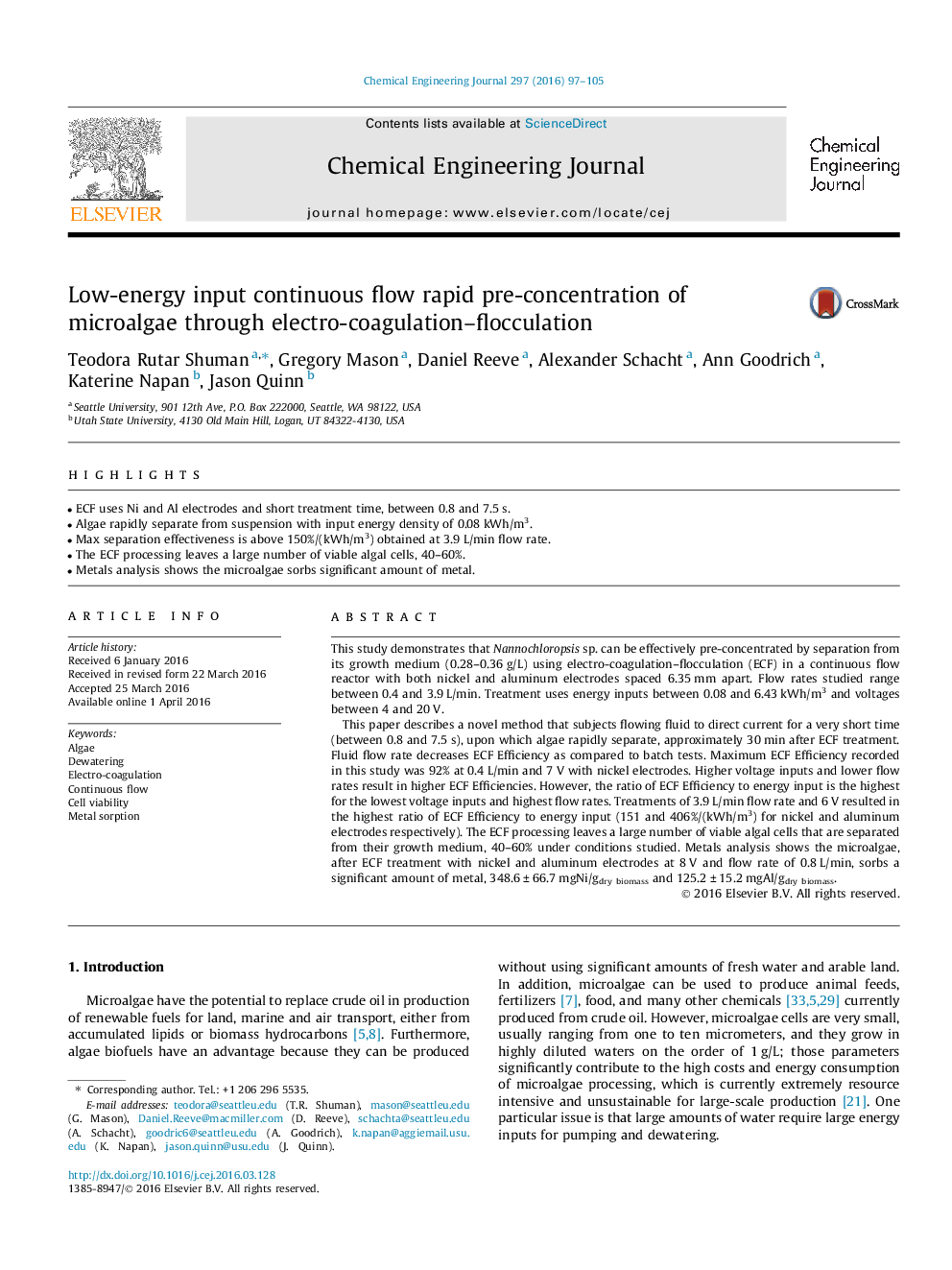| کد مقاله | کد نشریه | سال انتشار | مقاله انگلیسی | نسخه تمام متن |
|---|---|---|---|---|
| 145567 | 456344 | 2016 | 9 صفحه PDF | دانلود رایگان |

• ECF uses Ni and Al electrodes and short treatment time, between 0.8 and 7.5 s.
• Algae rapidly separate from suspension with input energy density of 0.08 kWh/m3.
• Max separation effectiveness is above 150%/(kWh/m3) obtained at 3.9 L/min flow rate.
• The ECF processing leaves a large number of viable algal cells, 40–60%.
• Metals analysis shows the microalgae sorbs significant amount of metal.
This study demonstrates that Nannochloropsis sp. can be effectively pre-concentrated by separation from its growth medium (0.28–0.36 g/L) using electro-coagulation–flocculation (ECF) in a continuous flow reactor with both nickel and aluminum electrodes spaced 6.35 mm apart. Flow rates studied range between 0.4 and 3.9 L/min. Treatment uses energy inputs between 0.08 and 6.43 kWh/m3 and voltages between 4 and 20 V.This paper describes a novel method that subjects flowing fluid to direct current for a very short time (between 0.8 and 7.5 s), upon which algae rapidly separate, approximately 30 min after ECF treatment. Fluid flow rate decreases ECF Efficiency as compared to batch tests. Maximum ECF Efficiency recorded in this study was 92% at 0.4 L/min and 7 V with nickel electrodes. Higher voltage inputs and lower flow rates result in higher ECF Efficiencies. However, the ratio of ECF Efficiency to energy input is the highest for the lowest voltage inputs and highest flow rates. Treatments of 3.9 L/min flow rate and 6 V resulted in the highest ratio of ECF Efficiency to energy input (151 and 406%/(kWh/m3) for nickel and aluminum electrodes respectively). The ECF processing leaves a large number of viable algal cells that are separated from their growth medium, 40–60% under conditions studied. Metals analysis shows the microalgae, after ECF treatment with nickel and aluminum electrodes at 8 V and flow rate of 0.8 L/min, sorbs a significant amount of metal, 348.6 ± 66.7 mgNi/gdry biomass and 125.2 ± 15.2 mgAl/gdry biomass.
Journal: Chemical Engineering Journal - Volume 297, 1 August 2016, Pages 97–105